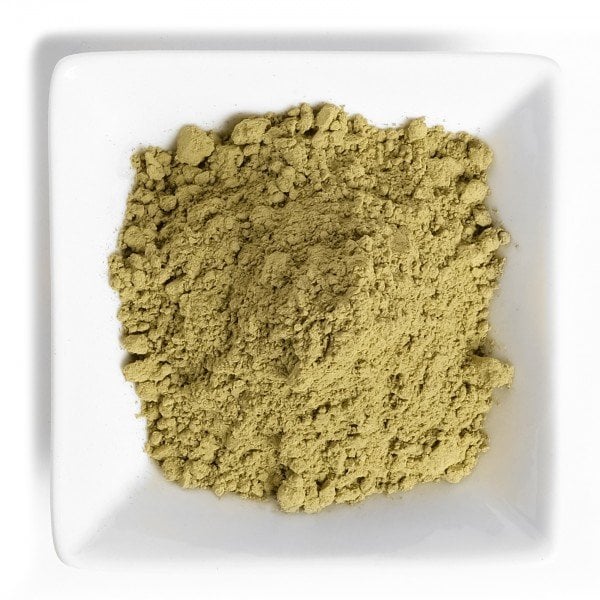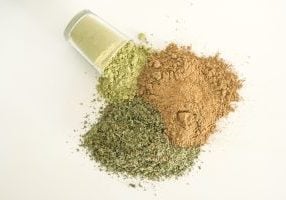Sometimes, two plants that seem very different can actually have a lot in common. Coffee and kratom have a lot of similarities, even though they wouldn’t seem that way at first. There isn’t a major controversy in the West about coffee, after all, and nobody considers coffee to be a dangerous drug.
The fact is, though, that coffee and kratom are in the same plant family. Scientists put plants in the same family when they have a lot of genetically similar traits. The families can seem strange, because sometimes related plants barely look anything like each other. The important part is that even though they look different, they’re similar biologically, and that’s where the commonality is.
The Rubiaceae Family
The family that contains coffee and kratom is called Rubiaceae, and is commonly called the coffee, madder, or bedstraw family. There are more than 13,000 species in the family, and alkaloids in the family have a wide variety of uses. Quinine, which comes from cinchona bark, is an antimalarial alkaloid that has saved thousands of lives.
The coffee family shows how diverse related plants can be, and how some can be good for people, while others might not be. This is why it’s important to know the differences between the plants we use.
The family which contains coffee and kratom has many smaller divisions. Coffee and kratom are in different groups within their family. Kratom is related to some other plants that have also been used in traditional medicine, while coffee is not.
Kratom is more closely related to cinchona than coffee is. The smallest scientific group that contains kratom only has about 10 species, but coffee is closely related to more than 120 other species. Many of these different species are grown as edible coffee, while kratom is a single species of tree.
This means that, in general, differences between kratom grown in different places are not that significant unless growers purposely change the growing environment or mix something else with it. Coffee, on the other hand, can have significant differences based on what species of bean is grown.
The Big Differences
Coffee and kratom are very different in how they look. Kratom comes from a type of tropical evergreen tree. It doesn’t have needles, like most people would think of evergreens, but it has broad leaves which have a traditional “leafy” shape. The trees don’t create fruit, but they do create little clusters of flowers at the end of their branches.
Coffee also comes from a tree, but the coffee bean is actually the pit of the tree’s fruit. Coffee trees tend to be much smaller than kratom trees, and produce less per tree than their larger cousins. Since coffee comes from mature fruits, coffee trees can be temperamental, and the fruits need to be ripened properly before harvest.
The two plants both produce many different alkaloids. Each one produces a different main alkaloid. Coffee produces caffeine, while kratom produces mitragynine. They each have different effects on the body because they interact with the body differently. Coffee also produces an alkaloid that can be found in green tea, which kratom does not produce. Both coffee and kratom do produce some potentially beneficial alkaloids.
Kratom, Coffee, & Humans
Human use of coffee is much more recent than kratom. People have been using kratom for many centuries, while coffee didn’t make a significant impact on the world until about the year 1500. Coffee doesn’t have the same history of traditional use as kratom, but it does have a long history of legends connected to its discovery and first use. The stories are wide-ranging, from a goddess gifting coffee to humanity to a monk or mystic discovering that it was energizing.
It isn’t clear exactly where coffee was first discovered or first cultivated, so there are stories connecting it to many different countries and time periods. Kratom doesn’t have such a rich history of stories connected to it, likely because it’s clear where the plant came from.
Coffee and kratom come from two different regions of the world, and continue to be grown in different regions today. Coffee originally came from Africa, and after it was exported to the rest of the world, many different countries began growing it. Most coffee is grown in South America today, and the United States is the world’s largest coffee importer.
Kratom comes from southeast Asia, and for the most part cultivation has stayed in the countries where the plant is indigenous. Indonesia is the world’s largest kratom grower, and exports kratom all over the world. It is possible that one day, since kratom is growing in popularity in the West, more countries will start growing and exporting kratom, as happened with coffee.
Both coffee and kratom have experienced legal hurdles in the past. In modern times, coffee is legal in the West, while kratom is not. This doesn’t mean that coffee has been without its critics, though, and there are actually some regulations in place specifically targeting the caffeine in coffee.
Coffee was responsible for a public health scare in the United States in the early 20th century. This is why caffeine must always be listed when it’s an ingredient in a product, because if its habit-forming potential. Different countries have attempted to ban coffee multiple times, both hundreds of years ago and relatively recently. Sweden, for example, banned coffee for a short time.
Closing
Coffee and kratom both have an interesting history, and the modern contexts of them both are just as fascinating. Both plants are popular, but neither of them have been without controversy over the years. Regulations have affected them both, as have changes in demand and climate.
Some people think that kratom will replace coffee one day, but there have been few things that have exploded in worldwide popularity as quickly as coffee. Kratom and coffee are still large parts of many cultures.











